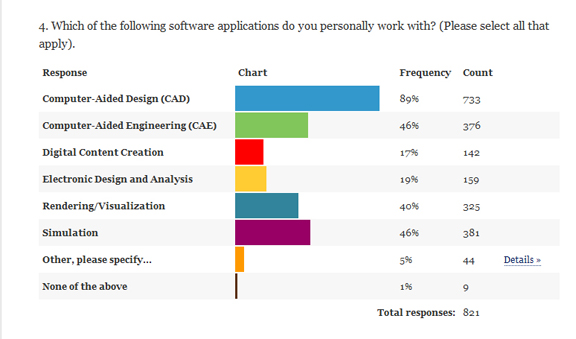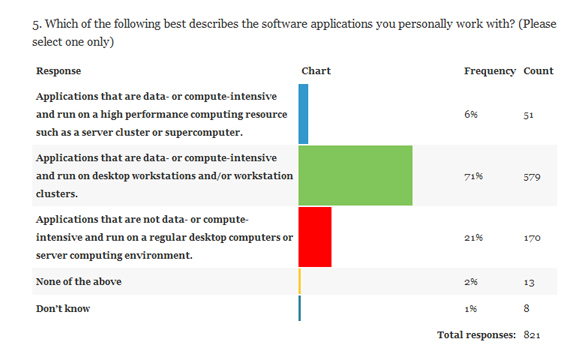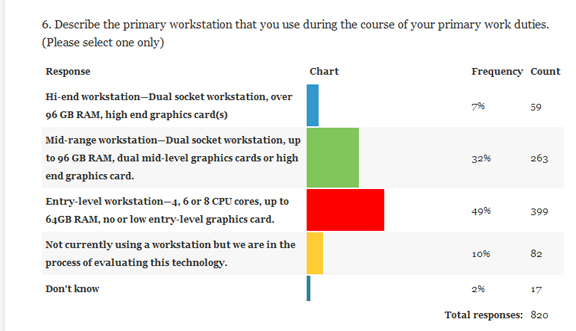Latest News
July 2, 2012
Apparently, one of the most desirable characteristics of a workstation is expandability.
In the survey DE and HP began running in June (still ongoing), participants were asked to list “characteristic statements that may be important to the selection of a professional workstation.” They were also asked to rate each statement on a scale of 1 to 5, where 5 means the characteristic is extremely important, and 1 means not at all important. When tabulated, the scores showed that the top ranking choice was “reliable/stable/scalable” (70%), closely followed by “performance/computing horsepower” (64%).
Even the write-in responses reflected that factor. Expandable, along with variations such as Scalable and Upgrade, repeatedly appear in the list of more than 200 words submitted as “important factors in the selection of a workstation.”
For expandability, you should pay attention to the number of PCI slots, extra memory capacity, and disc drives, according to Tom Salomone, HP’s marketing manager for workstations. But perhaps more important, he added, “The other thing they should look for is the ease with which they can do it. You don’t want to be there tinkering with the system with lots of tools, risking damage. You want something that’s simple to open, it’s obvious where the expansion slots are, and you can do it quickly.”
When asked to select the type of applications they run (with the option to pick more than one), participants tell us they’re heavily involved in CAD (89%), simulation (46%), computer-aided engineering (46%), and rendering/visualization (40%). The prevalent of simulation and visualization suggest users can benefit from multicore machines, as these applications, especially the latest releases, are written to take advantage of parallel processing.
Salomone distinguished the types of setup recommended for different applications. “With CAD, basically you want the maximum performance from your processor, so you want to figure out the fastest turbo-boost time is,” he said. “Most CAE applications scale with the number of cores that are on the processor, so you want most processors and most cores in those processors. Then in rendering and visualization, much like CAE, you need the [additional] cores, but don’t need as much memory as CAE would, but the graphics level could be intense.”
Statistics also showed that the majority of them (70%) work with applications that are data- or compute-intensive and works on workstations and/or workstation clusters. This indicates, in addition to individual workstations, participants may also need to rely on high-performance computing (HPC) resources to get the jobs done.
Nearly half of the participants (49%) described their workstations as “Entry level,” comprising 4, 6, or 8 CPU cores, up to 64GB RAM, no or low entry-level graphics card. Roughly one-third (32%) described their workstations as “Mid-range” machines with dual socket, up to 96 GB RAM, dual mid-level graphics cards or high end graphics card. Only 7% boasted working with “High-end” machines.
The statistics revealed above are based on partial survey results. The survey is still ongoing. It’s set to close on July 17. At the conclusion of the study, participants will be entered into a drawing for an HP Z1, an all-in-one workstation. People who complete the survey will also receive a summary of the detailed findings.
To take the survey, go to www.deskeng.com/workstations.
For more on the survey, along with Tom Salomone’s tips on selecting the right workstation for your workflow, watch the video below:
Subscribe to our FREE magazine, FREE email newsletters or both!
Latest News
About the Author
Kenneth Wong is Digital Engineering’s resident blogger and senior editor. Email him at [email protected] or share your thoughts on this article at digitaleng.news/facebook.
Follow DE








